2024.03.22 – 2024.05.11
Daniel Dewar & Grégory Gicquel: The Weaver and the Spoke
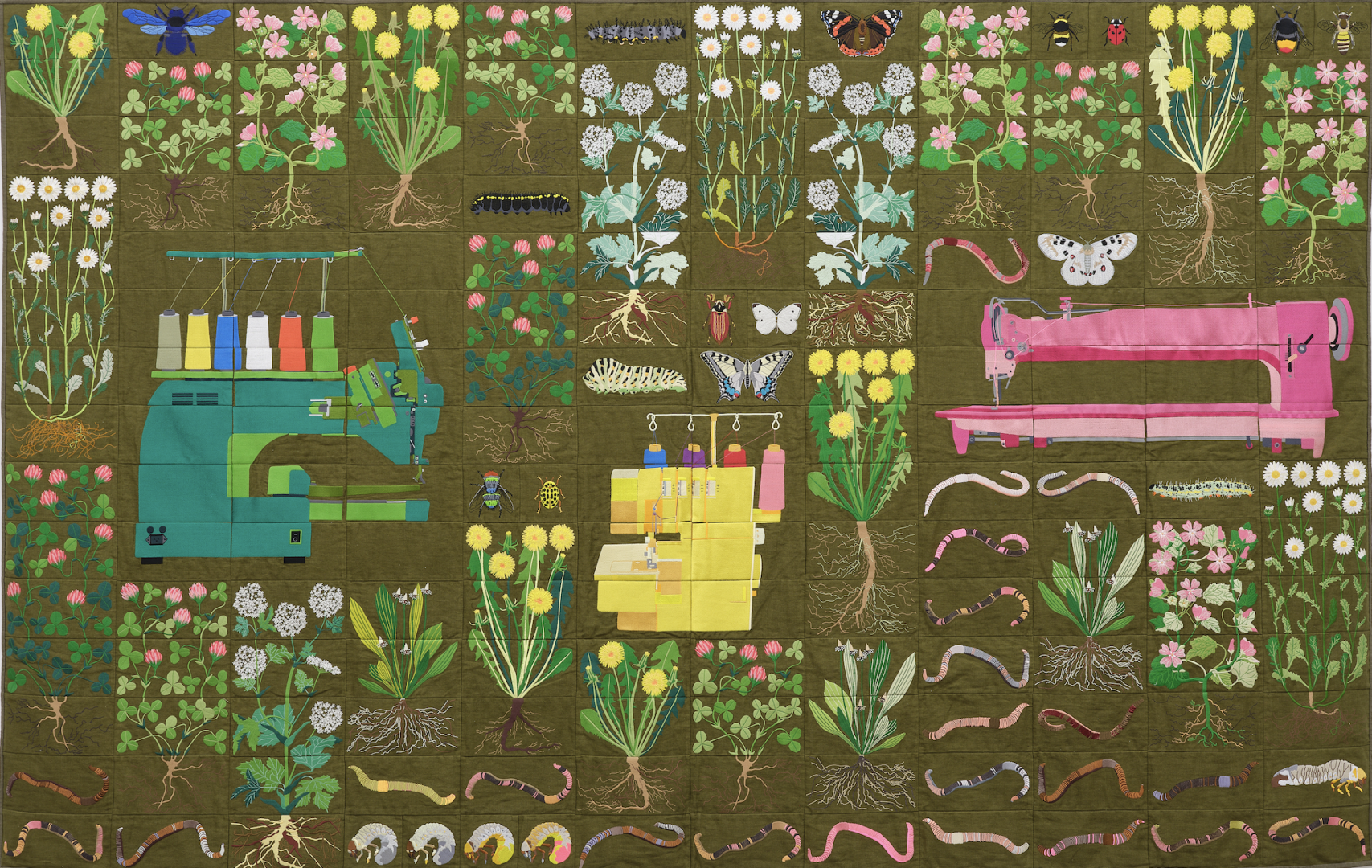
Antenna Space is pleased to announce Daniel Dewar & Grégory Gicquel’s first solo exhibition in China, which also inaugurates their representation by the gallery. The exhibition will be opened on March 22, 2024 and will last until May 11, 2024.
The Weaver and the Spoke surveys recent works created by the Anglo-French duo characteristic of their singular artistic approach. Dewar and Gicquel have spent over two decades exploring craft techniques and materials such as stone and wood carving, textile weaving, embroidering, and wood-fired ceramics. Using a range of modern and traditional tools, their practice exposes artists’ and, more broadly, humanity’s relationship with labor and production, as well as the historical evolution of industry and art, the utilitarian and the decorative.
Comprising a series of embroidered quilts, two hand-carved oak sculptures, one bench, and two hand-carved bas reliefs, the exhibition brings together pieces completed over the past year in the artists’ workshops. The title, The weaver and the spoke, directly refers to the craft of basket weaving, utilizing terms that designate the vertical and horizontal strands of material that are entwined to create a receptacle. Ideas of such interlacing are deployed throughout the exhibition, whether via the depiction of weaving techniques or the metaphorical interconnecting of objects, plants, animals, and insects.
Six quilts hang on the gallery walls, each embroidered in the duo’s workshops and hand-assembled from linen patches. While reminiscent of the botanical illustrations present in early herbals and pharmacopeia or the colored plates of entomology manuals, these works do more than simply register, reproduce, and categorize flora and fauna found in the wild. Here, all kinds of beings cohabit in a joyful and thriving ecosystem where varieties are interlaced. The principle of permaculture, wherein all materials and energies are interdependent, is portrayed: so-called “pests” such as the cabbage white caterpillar eat leaves and vegetables, insects forage and pollinate plants and weeds, larvae evolve into bugs, moths or butterflies. By invoking notions of interspecies cohabitation and codependence, the works imply that a return to such diversity could be beneficial—if not salvatory—for all forms of life at a time when industrial food production and monoculture pose a threat to our collective futures.
Among the plants and creatures of each quilt, the proto-industrial tools used by Dewar and Gicquel in their workshops to create the pieces are featured. Sewing machines, overlocking machines, and bobbins of colored thread are laid out in the vegetable and flower patches, drawing a parallel between the production and consumption of food, and that of artistic creation and appreciation.
Further unfurling the metaphorical interweavings that run throughout the exhibition are two hand-carved bas-relief sculptures in oak taking a pair of knitted sweaters for their subject. While it may seem absurd or impertinent to illustrate one dwindling craft technique by using another just as rare, the duo do so to highlight with humor how detached we have become both from the production of the textiles we wear daily and the use of decorative arts and crafts. This analogy between carving and knitting is accentuated visually by the wood’s grain, running either horizontally or vertically, depending on the stitch depicted. While hinting at the similarities, or even the interchangeability of all things, these works demonstrate a reverential approach to the material at hand, going with the grain and coaxing each stitch from the wooden block. Indeed, in the works present, Daniel Dewar and Grégory Gicquel find an almost tautological adequacy between the motif they chose to materialize and the technique employed to do so. For example, the oak bench placed at the entrance to the gallery, is ornamented with hand-carved snails and topped by an embroidered cushion showing white-tailed bumblebees, mallow flowers, and dandelion flowers. While the insects are stitched by a flitting needle, mirroring their speed and dexterity, the snails have slowly emerged at the cadence of the chisel carving, anchored in time and perceived stillness.
In tandem with such material and representational attentiveness, the duo’s work can be viewed as an ongoing questioning of the cultural opposition between artwork and functional object, a divide consecrated during the 19th and 20th centuries and reinforced by mass consumption and production methods. Although the bench appears utilitarian and decorative, it is in fact a sculpture, a discursive object. The two hand-carved oak cabinets that stand in the exhibition space follow the same logic, appearing simultaneously as highly decorative pieces of furniture and autonomous, freestanding sculptures.
From the cabinets emerge a muscular calf and a woven shoe, torsos and giant squash, taken from Dewar and Gicquel’s incongruous vocabulary of forms. Breaking down yet another boundary in order to suggest undeniable similarities, these pieces evoke the interrelations between human and nonhuman beings, between “nature” and “culture”. Exposing the affinities between a chest and butternut squash, the veins of wood and those of our flesh, the artists express a will to dehierarchize and merge all lifeforms once more, dissolving the artificial divide we have created. Thus, alongside depictions of vegetables, the human body is semi-present, fading in and out rather than placed at the center of attention.
Finally, in an unexpected and comedic gesture of mix-and-match, a traditional woven basket is paired with a woven shoe, once again applying the same absurdist quest of depicting the disappearing craft of weaving with that of carving. While tainted with humor, the motifs humbly recall pastoral practices such as foraging, mushrooming, and berry picking, activities which can act as means to re-appraise our relationship with nature yet to this day risk falling into obscurity, replaced by automation and industrialization.
Just like the weaver and the spoke, the fates of all things animate and inanimate are intertwined and cannot hold without one another. Dewar and Gicquel gesture through these works towards interweaving as a double panacea for our contemporary ailments: whether the “bygone” skills that can re-connect us with our means of (artistic) production or a more broad and metaphorical interlacing of the world. The multifaceted practice of Daniel Dewar and Grégory Gicquel suggests that an unpicking of our current ways and hierarchies is possible, using the new threads to create a resolutely alternative pattern and live a more consciously interwoven, interconnected life.
—
The artists would like to thank the team at Antenna Space, as well as all those taking part in the making of the present exhibition, including Céline Aernoudt, Ailsa Cavers, Sara Daniel, Janina Fritz, Yves Largiller, Olivier Levêque, MAJUBOIS, Karolina Michalik, Anna Reutinger, Estelle Saignes and Stéfan Tulépo.
Installation Views
Artworks
-
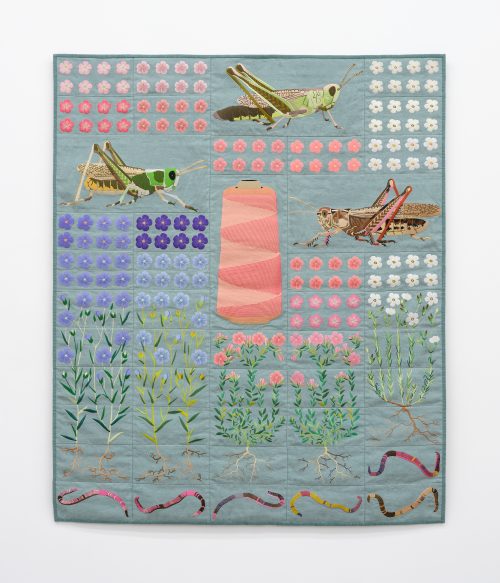
Daniel Dewar & Grégory Gicquel, Embroidered quilt with common flax plant, sticky flax plant, narrow-leaved flax plant, mottled grasshopper, meadow grasshopper, Moroccan grasshopper and bobbin, 2024
Cotton and polyester thread on linen fabric, cotton batting
168 × 140 cm
作品信息Information -

Daniel Dewar & Grégory Gicquel, Oak bench with white-tailed bumblebees, mallow flowers, dandelion flowers and snails, 2024
Embroidery on cushion, oak wood
60 × 146 × 66 cm
作品信息Information -

Daniel Dewar & Grégory Gicquel, Embroidered quilt with earthworms, cockchafer beetle larvae, false barley grass, red fescue grass, poppy plants, meadow fescue grass, English ryegrass, cinnabar moth caterpillar, giant peacock moth caterpillar, hebe tiger moth, death’s-head hawkmoth caterpillar, magpie moth, giant peacock moth, death’s-head hawkmoth, cinnabar moth, sparrow and recorder, 2024
Cotton and polyester thread on linen fabric, cotton batting
166.5 × 210 cm
作品信息Information -
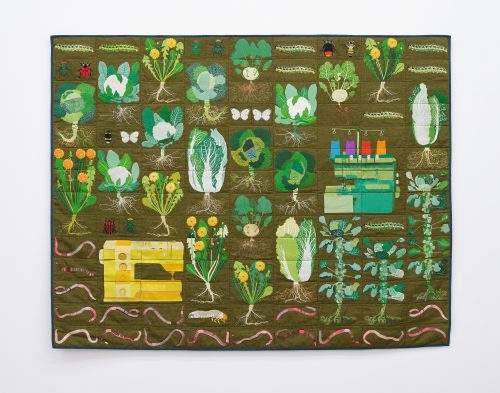
Daniel Dewar & Grégory Gicquel, Embroidered quilt with earthworms, cockchafer beetle larvae, dandelion plants, Brussels sprout plants, pe-tsaï cabbage plants, kohlrabi cabbage plants, striped shield bug, green bottle flies, cabbage white butterfly caterpillars, cauliflower cabbage plants, savoy cabbage plants, white-tailed bumblebee, cabbage white butterflies, ladybird beetle, red-tailed bumblebee, honey bee, sewing machine and overlocker machine, 2024
Cotton and polyester thread on linen fabric, cotton batting
194 × 248.5 cm
作品信息Information -
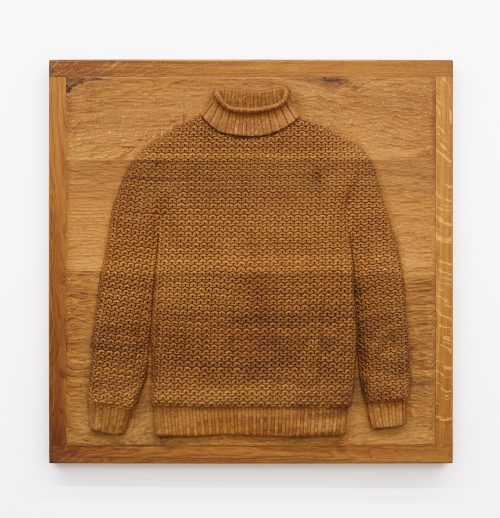
Daniel Dewar & Grégory Gicquel, Oak relief with garter stitch pull-over, 2024
Oak wood
115 × 115 × 9 cm作品信息Information -
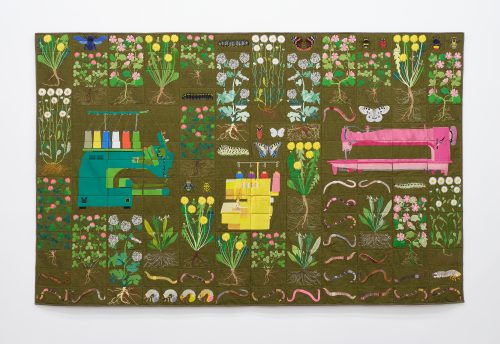
Daniel Dewar & Grégory Gicquel, Embroidered quilt with earthworms, cockchafer beetle larvae, clover plants, common hogweed plants, plantain plants, dandelion plants, mallow plants, daisy plants, green bottle fly, 22 punctata beetle, cabbage white butterfly caterpillar, swallowtail butterfly caterpillar, swallowtail butterfly, cockchafer beetle, cabbage white butterfly, Parnassius apollo butterfly, Parnassius apollo butterfly caterpillar, carpenter bee, red admiral butterfly caterpillar, red admiral butterfly, white-tailed bumblebee, ladybird beetle, red-tailed bumblebee, honey bee, embroidery machine, overlocker machine and long-arm sewing machine, 2024
Cotton and polyester thread on linen fabric, cotton batting
210 × 331 cm
作品信息Information -
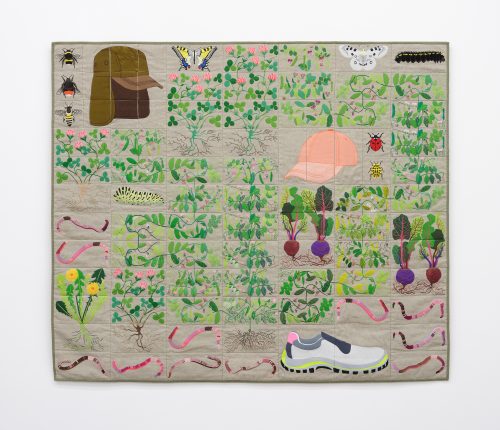
Daniel Dewar & Grégory Gicquel, Embroidered quilt with earthworms, dandelion plant, clover plants, pea plant, beetroot plants, swallowtail butterfly caterpillar, 22 punctata beetle, ladybird beetle, honey bee, red-tailed bumblebee, white-tailed bumblebee, swallowtail butterfly, Parnassius apollo butterfly, Parnassius apollo butterfly caterpillar, desert cap, cap and work shoe, 2024
Cotton and polyester thread on linen fabric, cotton batting
166.5 × 194.5 cm
作品信息Information -
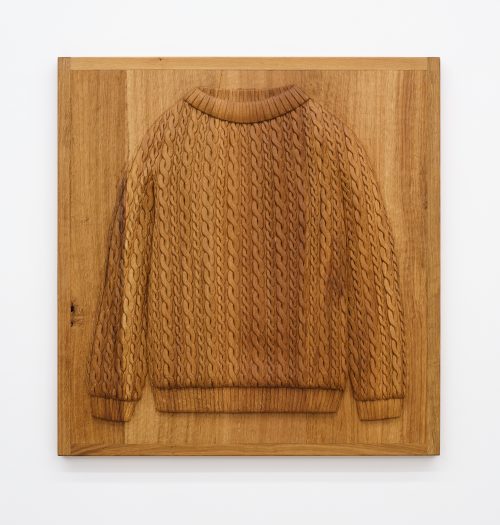
Daniel Dewar & Grégory Gicquel, Oak relief with cable stitch pull-over, 2024
Oak wood
117 × 112 × 9 cm作品信息Information -
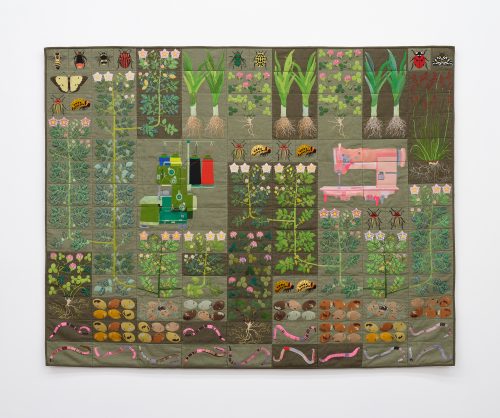
Daniel Dewar & Grégory Gicquel, Embroidered quilt with earthworms, potato plants, clover plants, Colorado beetles larvae, Colorado beetle, leek plants, clouded yellow butterfly, honey bee, red-tailed bumblebee, white-tailed bumblebee, striped shield bug, green bottle fly, 22 punctata beetle, ladybird beetle, magpie moth, overlocker machine and sewing machine, 2024
Cotton and polyester thread on linen fabric, cotton batting
194 × 249.5 cm
作品信息Information -
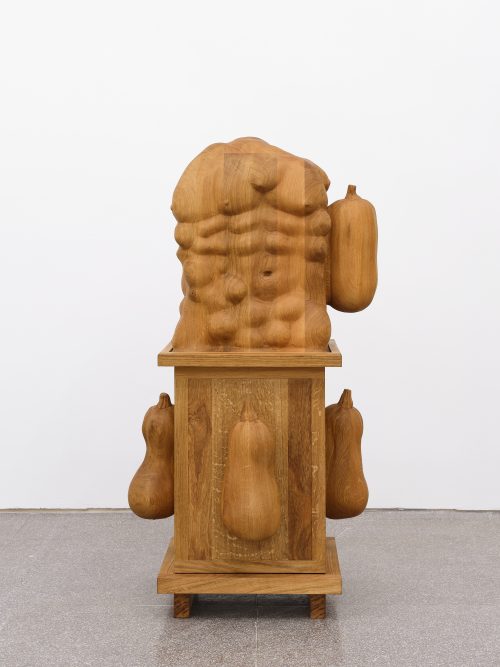
Daniel Dewar & Grégory Gicquel, Oak cabinet with courgettes and body fragments, 2024
Oak wood
155 × 89 × 70 cm作品信息Information -

Daniel Dewar & Grégory Gicquel, Oak cabinet with woven loafer shoe and leg, 2024
Oak wood
155 × 65 × 56 cm作品信息Information











